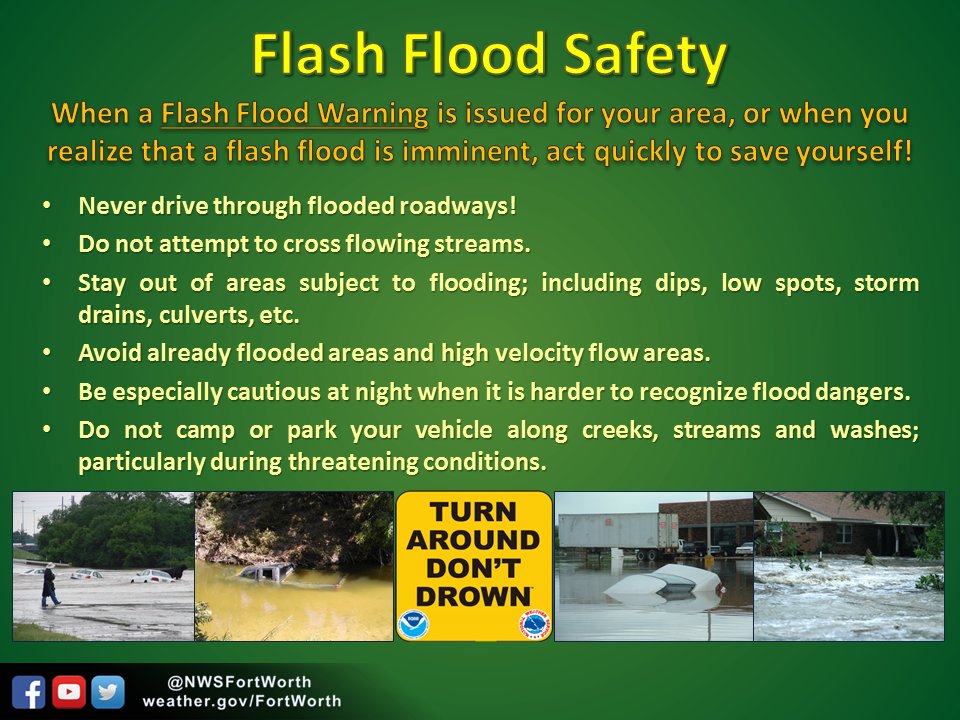What Constitutes A Flash Flood Emergency? A Guide To Safety

Table of Contents
Defining a Flash Flood Emergency
Flash floods are a terrifyingly rapid and unexpected form of flooding. Unlike slow-onset river floods, flash floods are characterized by a sudden and significant rise in water levels in a very short period, often with little to no warning. This "rapidly rising water" can transform normally dry areas into raging torrents in a matter of minutes, making them incredibly dangerous. The intense rainfall that triggers these events often comes from localized thunderstorms or heavy downpours, leaving communities with very short notice before the danger strikes.
- Flash floods occur with little or no warning. This is a key characteristic that distinguishes them from other types of flooding.
- They are characterized by a rapid and significant rise in water levels. The speed of the rising water is what makes them so dangerous.
- They can occur in normally dry areas. This is why it's crucial to be prepared even if you don't live near a river or lake.
- They are often triggered by intense, localized rainfall. Severe thunderstorms are a major culprit.
- They pose a significant threat to life and property. Flash floods cause significant damage and tragically, loss of life.
Recognizing the Warning Signs of a Flash Flood Emergency
Recognizing the warning signs of a flash flood is the first step in protecting yourself. While the sudden nature of flash floods makes immediate warnings difficult, paying attention to visual cues and official weather alerts is vital. Staying informed about the weather forecast, especially during periods of heavy rain, is crucial.
- Rapidly rising water levels in streams, rivers, or creeks. A noticeable and quick increase in water levels is a serious indicator.
- Sudden flooding of normally dry areas. Water appearing where it shouldn't be is a major red flag.
- Heavy or persistent rainfall. Prolonged or intense downpours increase the risk dramatically.
- A sudden increase in the flow of water in a drainage ditch or culvert. These often indicate that water is accumulating upstream.
- Official weather alerts and warnings from emergency services. Pay close attention to flash flood watches and warnings issued by your local meteorological agencies.
Understanding Flash Flood Watches vs. Warnings
It’s important to understand the difference between a flash flood watch and a flash flood warning. These terms have distinct meanings:
- Watch: A flash flood watch means conditions are favorable for flash flooding to develop. This isn't an immediate threat, but it's a signal to stay informed, monitor conditions closely, and prepare for potential flooding. The potential for flash flooding exists.
- Warning: A flash flood warning signifies that flash flooding is occurring or is imminent. This is a serious alert; immediate action is necessary to protect yourself and your property. The imminent threat of flash flooding requires immediate action.
Safety Measures During a Flash Flood Emergency
When a flash flood warning is issued, or you observe the warning signs described above, immediate action is critical. Your priority should be to protect your life.
- Move to higher ground immediately. This is your most important action. Get to safe, elevated ground as quickly as possible.
- Avoid driving through flooded areas—even a few inches of water can sweep a car away. Never attempt to drive through floodwaters; the risk of being swept away is extremely high. "Turn around, don't drown" is a crucial motto.
- Do not attempt to walk or wade through floodwaters. Floodwaters can be deceptively powerful, and hidden dangers like debris and strong currents lurk beneath the surface.
- If trapped in a vehicle, get out and seek higher ground. Abandon your vehicle if necessary and move to safety.
- Have an emergency kit ready with essential supplies. This kit should include water, non-perishable food, a first-aid kit, flashlights, and other necessary supplies.
Post-Flash Flood Emergency Procedures
Once the immediate danger of the flash flood has passed, there are still crucial steps to take:
- Check for injuries and seek medical attention if needed. Assess any injuries and seek immediate medical help if necessary.
- Contact emergency services to report damage or request assistance. Report any damage to your property or infrastructure to the appropriate authorities.
- Avoid contact with floodwater, which may be contaminated. Floodwaters are often contaminated with sewage and other harmful substances.
- Inspect your property for damage and take necessary safety precautions. Assess the damage and secure your property to prevent further harm.
- Document damage for insurance purposes. Thoroughly document any damage to your property for insurance claims.
Conclusion
Understanding what constitutes a flash flood emergency is paramount for your safety and the safety of your community. By recognizing the warning signs, taking appropriate precautions, and knowing what to do before, during, and after a flash flood, you can significantly reduce the risk and protect yourself from the devastating consequences of this powerful natural event. Remember, your life is invaluable; stay informed, stay vigilant, and be prepared to respond to a flash flood emergency effectively. If you live in a flash flood-prone area, develop a comprehensive flash flood preparedness plan today.

Featured Posts
-
 Hells Angels Craig Mc Ilquham Remembered At Sunday Memorial
May 26, 2025
Hells Angels Craig Mc Ilquham Remembered At Sunday Memorial
May 26, 2025 -
 Formula 1 Fashion A Guide To This Seasons Hottest Looks
May 26, 2025
Formula 1 Fashion A Guide To This Seasons Hottest Looks
May 26, 2025 -
 The Hells Angels A Look Inside
May 26, 2025
The Hells Angels A Look Inside
May 26, 2025 -
 Jadwal Lengkap Moto Gp Inggris Di Silverstone Update Klasemen And Posisi Marquez
May 26, 2025
Jadwal Lengkap Moto Gp Inggris Di Silverstone Update Klasemen And Posisi Marquez
May 26, 2025 -
 Michael Schumachers Championship Winning Ferrari F1 Car Heads To Monaco Auction
May 26, 2025
Michael Schumachers Championship Winning Ferrari F1 Car Heads To Monaco Auction
May 26, 2025
